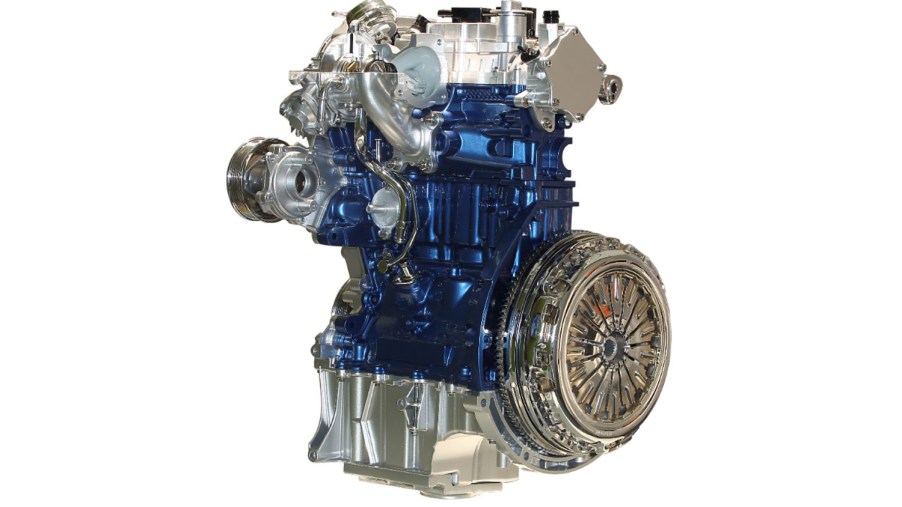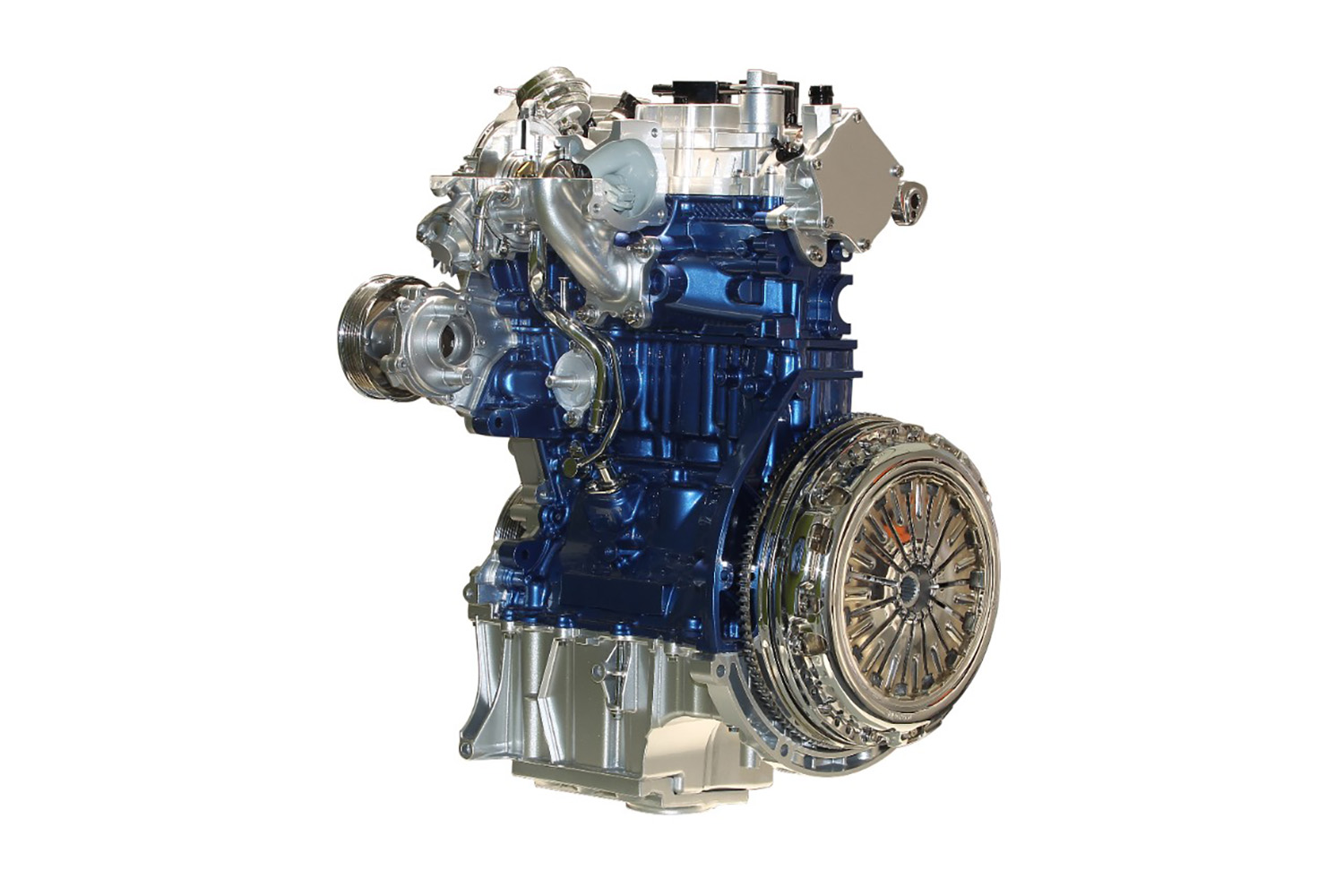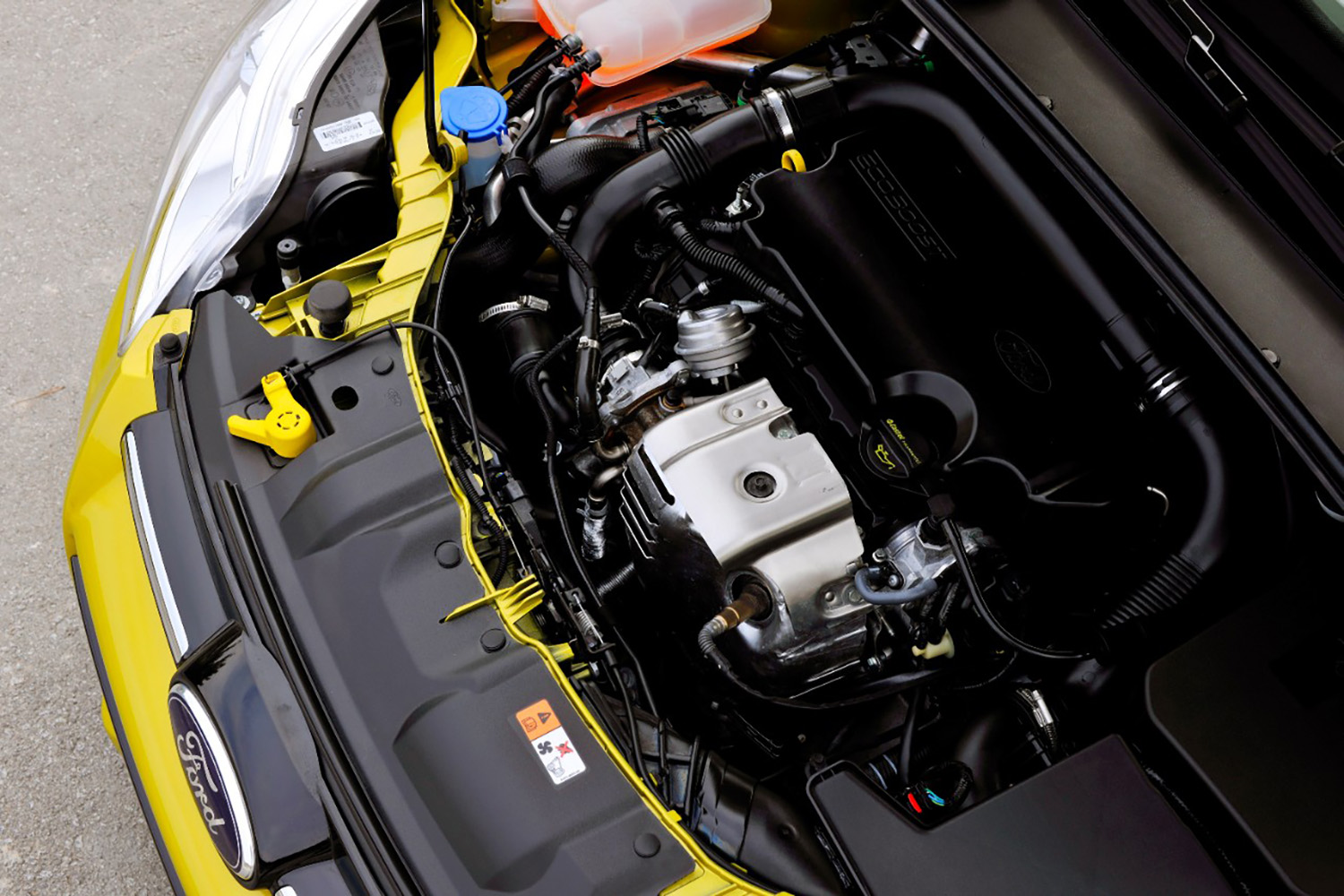
Avoid This Ford Ecoboost Engine at All Cost
The lineup of Ecoboost engines from Ford offer a great combination of power and fuel efficiency. However, as with just about everything in this world, there’s bound to be a problem child. For the most part, Ford’s turbocharged Ecoboost engines are reliable. There is, however, one that is quite problematic. So much so that Ford even reimbursed the owners of this troublesome engine.
The 1.0L Ecoboost three-cylinder loves to eat head gaskets

According to MotorReviewer, the 1.0L Ecoboost three-cylinder engine first became available in 2012 with the Ford Focus and Ford C-Max. Overall, it seems like a great idea. It’s a super lightweight all-aluminum engine that can spit out up to 125 horsepower and 150 pound-feet of torque, depending on which chassis it’s in. Additionally, it saw fuel economy ratings north of 40 MPG, too.
It’s a bit of a shame, then, that this engine is pretty problematic. The first and most prominent issue with the 1.0L Ecoboost engine is its tendency to blow head gaskets.
The 1.0L had a faulty lower hose in the engine’s cooling system that would allow coolant to escape slowly. So, as the engine slowly ran itself out of coolant, the owners didn’t often take notice. Additionally, the vehicle’s temperature gauge showed a fine operating temp despite the engine overheating. As a result, many of these engines have head gasket issues. Additionally, some suffered from warped or cracked cylinder heads, too.
According to Engine Builder, Ford even paid out reimbursements to 1.0L Ecoboost engine owners.
“Ford has already made substantial contributions toward the cost of 1.0-liter repairs. Ongoing discussions with customers show that Ford needs to go further to ensure reasonable repair costs are covered. With any future cases subject to being assessed and linked to potential 1.0-liter engine overheating, we will contribute 100% of the cost of repair at a Ford dealer. Furthermore, we will re-examine previous cases to ensure that this policy of a 100% contribution to the repair cost is applied consistently,” Ford said about the engine.
Unfortunately, there are more issues with this engine

This engine uses direct injection. While that allows for more efficient use of fuel, it means there’s no fuel running over the valves inside the intake manifold as there would be with a standard multi-port fuel injection setup. As a result, substantial amounts of carbon builds up on the valves over time. Eventually, this can lead to valves struggling to open or close properly and can potentially even cause damage to the valves.
In all fairness, though, most Ecoboost engines also use direct injection and will suffer from this same issue. There are cleaning solutions like walnut blasting the valves and intake manifold. However, they can be quite costly.
Finally, the 1.0L Ecoboost engine is known to suffer from fuel pressure issues at higher mileage. As a result, the engine may not make full power. However, replacing the worn camshaft bucket can solve this issue, according to MotorReviewer.
While Ford alleges that engines after 2014 no longer suffer from the faulty coolant pipe, there are still numerous cases of these engines blowing head gaskets in newer model years.
Ultimately, when shopping for a used Ford, it’s best to avoid the 1.0L Ecoboost three-cylinder and save yourself the headache. So, if you’re shopping for a Ford Fiesta, Ecosport, Focus, or C-Max, keep your eyes peeled for this cursed engine.



